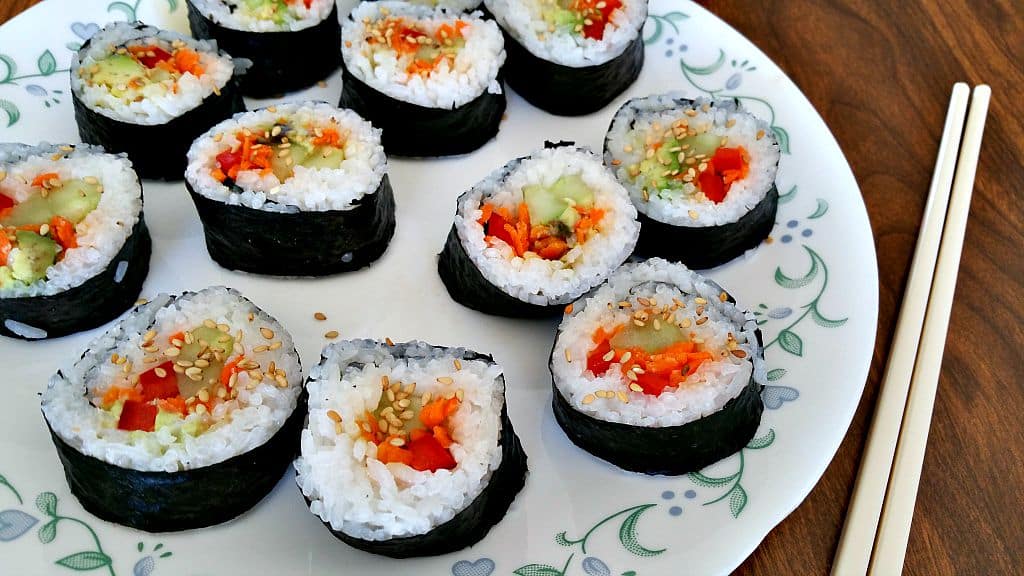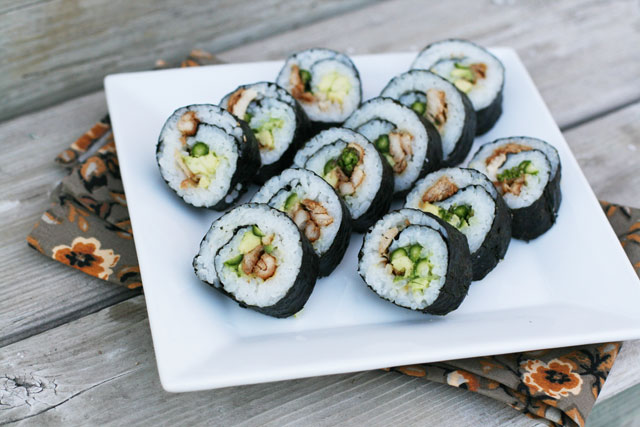Embark on a culinary adventure right in your own kitchen with Homemade Sushi. Originating from Japan, sushi has captivated food enthusiasts worldwide with its exquisite presentation, delicate flavors, and endless variety. Crafting sushi at home offers a unique opportunity to unleash your creativity, experiment with fresh ingredients, and tailor each roll to your taste preferences.
Whether you’re a seasoned sushi chef or a novice enthusiast, making sushi at home is a rewarding and enjoyable experience. From traditional nigiri and sashimi to inventive rolls bursting with vibrant colors and flavors, the possibilities are endless. With a few essential techniques and quality ingredients, you can create restaurant-quality sushi that will impress family and friends alike.
Join the ranks of sushi aficionados and dive into the art of Homemade Sushi. From mastering the perfect sushi rice to mastering the art of slicing and rolling, let your imagination run wild as you craft your own culinary masterpiece. Get ready to tantalize your taste buds and elevate your dining experience with Homemade Sushi.
:max_bytes(150000):strip_icc()/24228-Sushi-roll-ddmfs-4x3-2914-1839f746d9334814a7a5d93ed45ba082.jpg)
Ingredients:
- Sushi Rice:
- 2 cups sushi rice
- 2 1/2 cups water
- 1/2 cup rice vinegar
- 2 tablespoons sugar
- 1 teaspoon salt
- Sushi Fillings:
- Sushi-grade fish (salmon, tuna, etc.)
- Cucumber, thinly sliced
- Avocado, sliced
- Crab sticks
- Carrots, julienne
- Cream cheese (optional)
- Sesame seeds
- Nori (seaweed sheets)
- Sushi Rolling Supplies:
- Bamboo sushi rolling mat
- Plastic wrap
- Sharp knife
-
Bowl of water with a bit of rice vinegar (for dipping fingers)

Instructions:
1. Prepare Sushi Rice:
- Rinse sushi rice under cold water until the water runs clear.
- In a medium saucepan, combine rice and water. Bring to a boil, then reduce heat to low, cover, and simmer for 20 minutes.
- In a small saucepan, combine rice vinegar, sugar, and salt. Heat over low heat until the sugar and salt dissolve.
- Transfer cooked rice to a large bowl and fold in the vinegar mixture. Let it cool to room temperature.
2. Prepare Sushi Fillings:
- Slice fish, vegetables, and any other fillings into thin strips or slices.
3. Assemble Sushi Rolls:
- Place a sheet of nori on the bamboo mat, shiny side down.
- Wet your fingers and spread a thin layer of sushi rice over the nori, leaving about 1 inch of space at the top.
- Arrange fillings in a line across the center of the rice.
- Using the bamboo mat, roll the sushi tightly, pressing gently as you go.
- Seal the edge of the nori by wetting it slightly with water.
- Repeat with remaining ingredients.
4. Slice and Serve:
- Using a sharp knife dipped in water, slice each sushi roll into 6-8 pieces.
- Arrange on a platter and serve with soy sauce, wasabi, and pickled ginger.
Enjoy your homemade sushi!
WATCH HERE
origin of sushi
The origins of sushi can be traced back to Southeast Asia, where people preserved fish in fermented rice. This method of preservation allowed them to store fish for extended periods, resulting in a fermented rice-fish combination known as “narezushi.” This early form of sushi likely originated in the Mekong River region before spreading to China and Japan.
In Japan, sushi evolved into different forms over centuries. One significant development was the transition from fermented rice to vinegared rice, which occurred around the 17th century in Edo (now Tokyo). This new style of sushi, known as “edomae-zushi,” featured fresh fish served atop seasoned rice. The vinegar in the rice helped preserve the fish while enhancing its flavor.
Edomae-zushi became popular in Edo, especially among street vendors and restaurants catering to travelers and locals. Over time, sushi spread throughout Japan and underwent further innovations, including the introduction of different fish varieties and techniques for preparing and presenting sushi.
In the late 19th century, sushi underwent another transformation with the invention of refrigeration, allowing for the distribution of fresh fish beyond coastal areas. This innovation, along with improvements in transportation, contributed to the popularity of sushi across Japan and eventually worldwide.
Today, sushi is enjoyed in various forms and styles around the globe, reflecting both its ancient origins and modern adaptations. It has become a symbol of Japanese cuisine and culinary artistry, appreciated for its simplicity, freshness, and diversity.
Where it is famous?
Sushi is famous worldwide and is enjoyed in many countries around the globe. However, some regions are particularly renowned for their sushi culture and expertise:
- Japan: Naturally, Japan is the birthplace of sushi and remains one of the most famous destinations for experiencing authentic sushi. From high-end sushi restaurants in Tokyo to small local sushi joints across the country, Japan offers a diverse range of sushi experiences.
- United States: Sushi gained popularity in the United States following World War II and has since become a staple of American cuisine. Cities like Los Angeles, New York City, and San Francisco are known for their vibrant sushi scenes, offering a wide variety of sushi restaurants ranging from traditional to fusion styles.
- Brazil: Brazil has a large Japanese immigrant population, particularly in cities like São Paulo and Rio de Janeiro. As a result, Brazilian sushi, known as “sushi brasileiro,” has its own unique flair, incorporating local ingredients and flavors into traditional sushi preparations.
- Peru: Peru has a significant Japanese immigrant community, and the fusion of Japanese and Peruvian cuisines has given rise to a style of sushi known as “Nikkei sushi.” Nikkei sushi often features Peruvian ingredients such as aji peppers, yuzu, and rocoto chili, resulting in a distinct and delicious culinary experience.
- Europe: Sushi has gained popularity across Europe, with cities like London, Paris, and Berlin boasting diverse sushi scenes. European interpretations of sushi may incorporate local ingredients and flavors, reflecting the continent’s culinary diversity.
Overall, sushi’s popularity transcends borders and cultures, making it a beloved culinary delight enjoyed by people around the world.

